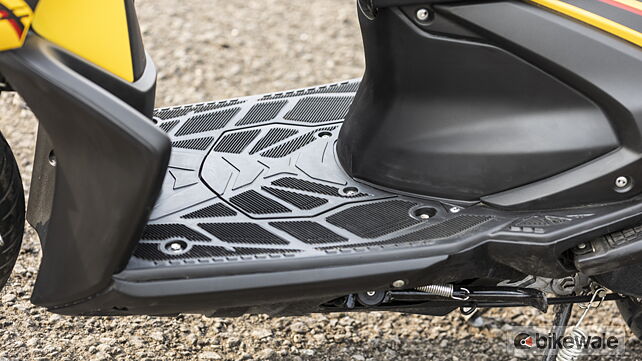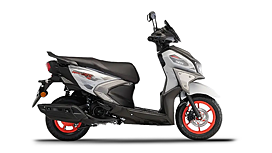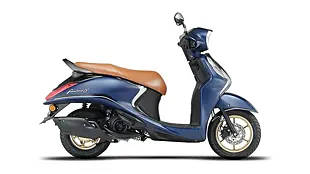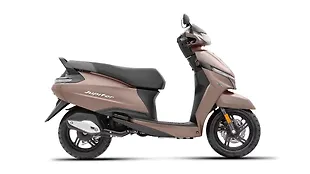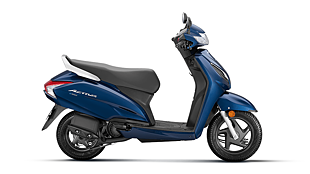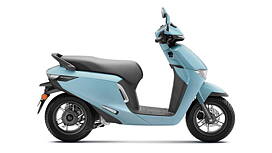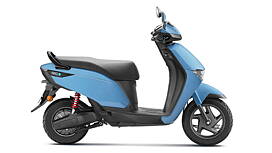Introduction

Pros: Has a refined engine, Is lightweight
Cons: Not for taller riders, Could get more features
The RayZR has always been part of Yamaha’s scooter line-up in India alongside the Fascino. And over the years, both scooters have gotten similar updates even though they cater to a different set of buyers. Back in 2020, we tested the RayZR 125 which received the 124cc engine. And for this year, Yamaha has tweaked the same engine to offer a bit more performance along with the ‘Hybrid’ to its name.
However, is it still relevant enough to take on the TVS Ntorq 125, which is the highest-selling sporty 125cc scooter on the market today? We that in mind, we rode the Yamaha RayZR Fi-Hybrid for a couple of days. And here is what we came back with…
Quality

When you first look at the RayZR 125 Hybrid and try to differentiate it from the previous model, there isn’t much that would stand out. Well, because there isn’t much difference here. The bodywork is the same as the previous version. However, Yamaha has cleverly designed new graphics that amplify the lines on the RayZR making it appear sharper than before. Even the inclusion of new colours like this Yellow Cocktail option here has added youthfulness to the package.

That said, when it comes to quality on the Yamaha RayZR 125 Hybrid, nothing has changed. And that’s a good thing. The plastics and components continue to feel well built and the black finishes around the cluster and switchgear feel like they would last a good number of years. While the fitment is good for the most part, we did happen to find a few panel gaps here and there. Although overall, the RayZR is well-put-together.
Comfort

The compactness of the RayZR 125 Hybrid is what you’d notice first when you get on. For short riders, it wouldn’t be an issue. Although for someone tall, the handlebar would be an intrusion whilst taking tight turns. For me, at 5’7”, the space on the floorboard felt adequate. However again, if you have long legs, you might want to look somewhere else.

Nonetheless, the RayZR’s seat offers a commendable amount of space to move around and equally good cushioning too. We rode the scooter for around 120kms without a break and the seat never gave us any trouble. It is also decently spacious for the pillion. Speaking of which, the ride quality on the RayZR 125 was the best with a pillion on board. On solo rides, the suspension setup, especially at the front, felt stiff as the scooter fussed over minor undulations on the road.
Performance

Now, as we mentioned earlier, the Yamaha RayZR 125 Fi-Hybrid gets a 124cc, air-cooled engine as before although with something called a Hybrid Power Assist system. What this essentially does is use the Smart Motor Generator (SMG) that also features the previous model to work alongside a revised ECU for quicker acceleration off the line. Not only that, but Yamaha has also managed to bump up the torque from 9.7Nm to 10.3Nm on the Hybrid version.

All of these changes have indeed resulted in the RayZR 125 feeling quicker while twisting the throttle from a standstill. Although, it works only after a certain degree of throttle input to ‘assist’ you when accelerating hard. Now, compared to its rivals, the RayZR 125 isn’t the fastest scooter around. Although, its lack of weight is its biggest advantage. Tipping the scales at just 99kg, the RayZR feels extremely flickable and agile. This also makes it easy to move around in parking or while putting it on the main stand.

And just like before, the Yamaha RayZR 125 Hybrid feels refined and smooth all through. Right from the time you crank up the motor to its top speed of 96kmph, the scooter is nearly vibe-free with only minor buzzing on the floorboard around 50-53kmph. As for its brakes, the setup lacks initial bite and does not feel confidence-inspiring while braking hard.
Technology

Now, when it comes to the list of features, the Ray ZR Hybrid isn’t at the top of the game, but it does have functional equipment. You get a combined braking system, side-stand cut-off, 21 litres of under-seat storage, and a multi-function key. There also is an idle-start-stop system that cuts off the engine if left idle for more than 3 seconds to save fuel. And while the LCD shows fuel level, two trip meters, odo, and speed, it misses out on a clock.

Nonetheless, the Ray ZR 125 is compatible with the Yamaha Motorcycle Connect X app, if you’d want to have some extra information about your scooter. The other feature that sets the Hybrid apart from the other version is the LED headlamp. However, the setup fails to illuminate sufficiently even in high-beam setting.
Fuel Efficiency

On our test route that incorporates 50kms of riding in the city, the Ray ZR 125 Hybrid returned a commendable 48.8kmpl. Combined with its 5.2L fuel tank, the scooter has a range of around 254kms.
Verdict

The Yamaha Ray ZR 125 Hybrid does most things one would ask of a scooter. It has a smooth-running engine with decent mileage, utilitarian features like a big boot, and an idle-start-stop system. The Ray ZR is also easy to use in the city thanks to its lightweight and flick-able nature. Yes, there are a few aspects that could be better like the brake feel and suspension setup. But the one thing the Ray ZR 125 seems to lack big time is an identity.

Apart from seeking practicality and usability, consumers seem to demand a sense of uniqueness from their two-wheelers today. Around its Rs 79,830 price tag, you have the TVS Ntorq 125 with much more features and power, or the slightly more expensive Honda Grazia that has an edgy and distinct design. However, if you still want a Yamaha, you could consider the Ray ZR Street Rally Hybrid version which comes with knuckle guards, different tyres, and slightly redesigned front panels at a premium of Rs 4,000 over the standard version’s price.
Photos by Kapil Angane
Gallery
1/47
Floorboard
Double Tap to Zoom











